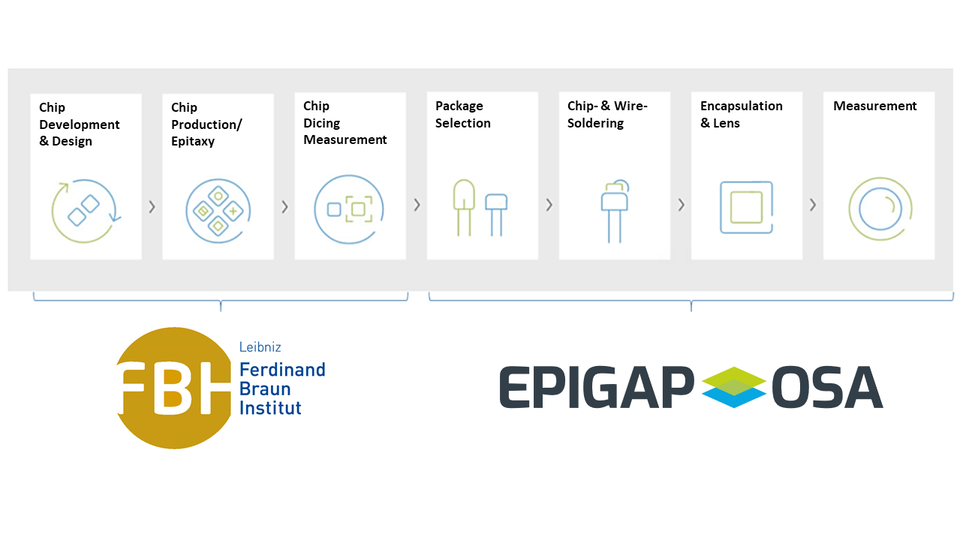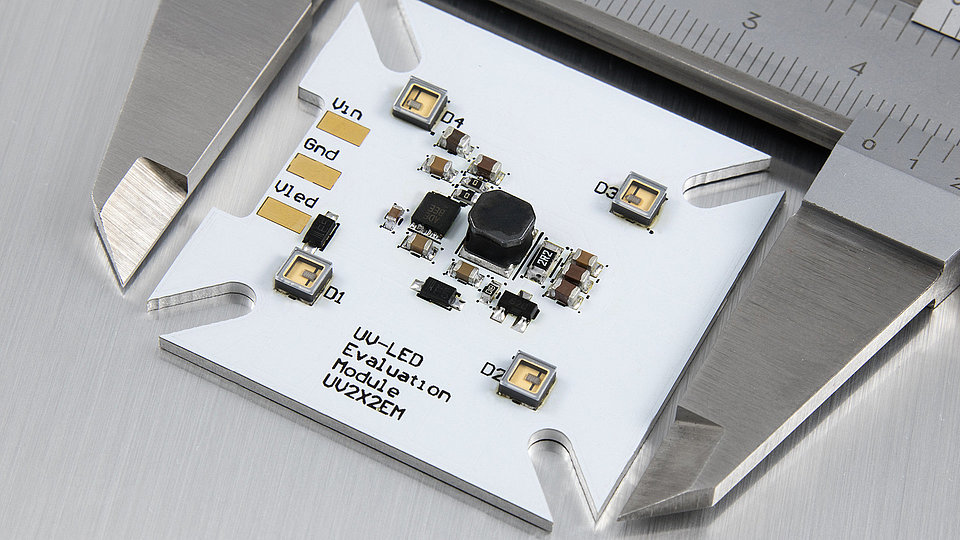Multi-wavelength UV-LED module for gas sensing
The demand for light-emitting diodes (LEDs) in the ultraviolet-C (UVC) spectral range below 255 nm is currently increasing. They can be used to disinfect surfaces as well as liquids and air. Skin-tolerant UV antiseptics and gas analysis are further potential application fields for far-UVC LEDs with emission wavelengths below 240 nm. Only two vendors currently offer LEDs with such short wavelengths. However, their possible applications are limited due to the optical power of < 1 mW and comparatively short lifetimes. Further, not only single wavelengths but also combinations of several wavelengths in the UV spectral range are of interest for the applications mentioned. However, no multi-wavelength UV-LED modules are currently available on the market.
The aim of this project, which is co-financed by the European Union, is to develop an innovative technology to produce multi-wavelength UV LED modules using far-UVC LEDs. The FBH has comprehensive expertise in the field of epitaxy and chip development for far-UVC LEDs. The institute provides the basics for new, innovative concepts and methods in the field of epitaxy (band structure engineering via semiconductor heterostructure design) and chip technology (current distribution engineering via chip design) of these LEDs. The project partner EPIGAP OSA will develop a process for producing multi-wavelength UV LED modules. The novel modules are intended to emit at wavelengths of 227 nm, 285 nm, and 390 nm. Thus, they can be used in the field of gas analysis to detect nitrogen oxide, sulfur dioxide, and nitrogen dioxide. Their lifetime and performance are expected to significantly exceed the current state of the art.


